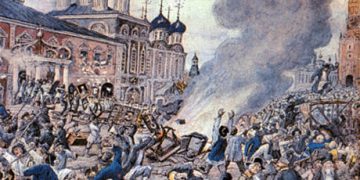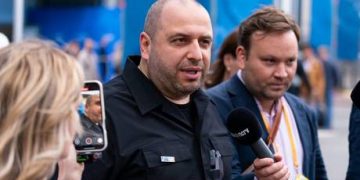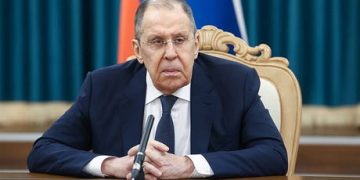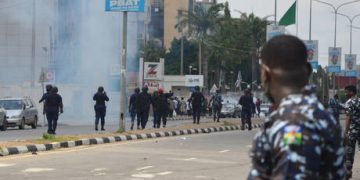September 5, 2025, 2:16 pm
Author – Séamus Malekafzali


Lebanon’s Prime Minister Nawaf Salam made an announcement on August 7 that would have been unthinkable even a year before: Hezbollah — indeed all militias in the country — would be disarmed by the end of 2025.
Hezbollah, a Shia Muslim political organization which has long been considered more powerful than the Lebanese Army itself, has been on its back foot since its November 2024 ceasefire with Israel. Since then, the group has been unable to intervene again, for either Gaza or Iran. Now, in its moment of weakness, there is a push to neuter Hezbollah altogether. But is this a push from within Lebanon, or is it coming from outside its borders?
Though the Lebanese government announced the disarmament plan, the effort is an unashamed American initiative, with the Arab press openly describing it as the “American paper.” President Donald Trump’s envoys to the region, for their parts, are saying the plan can bring prosperity to an economically depressed Lebanon, and domestic advocates for disarmament — predominately supporters of parties that were allied with Israel in the 1980s — tout it as a way to restore Lebanon’s ability to self-govern.
Some of the higher echelons of Lebanon’s power structure, however, see something else in the plan: the U.S. and Israel pushing Lebanon back into a devastating civil war.
Hezbollah has so far adamantly refused to disarm, proclaiming that the group would fight any such effort without a comprehensive plan for the national military to confront Israeli aggression.
American officials have grown fond of saying how the Lebanese people want Hezbollah disarmed, but preliminary data does not support the notion. One poll conducted after the disarmament plan was announced showed 58 percent of the country against disarming the group without a plan to deal with Israel. According to said survey by the Consultative Center for Studies and Documentation, 71 percent of respondents believe the army is incapable of confronting Israel.
The Americans
While the Trump administration has an ambassador to Lebanon, the main figure in charge of America’s foreign policy regarding the country is Tom Barrack. Officially the ambassador to Turkey and special envoy for Syria, Barrack continues to up the pressure on the Lebanese state.
He has asked that Lebanon’s Army become a “peacekeeping force, not a military offensive force.” He wants Lebanon to hold direct talks with Israel, calling their lack of contact “insanity.” Barrack’s lack of candor has shocked many, for instance calling Lebanese journalists “animalistic” and saying they are “what’s wrong with the region” after they hounded him with questions at a press conference.
U.S. Deputy Special Presidential Envoy to the Middle East Morgan Ortagus has also become a familiar face to the Lebanese. She too has ignored regional sensitivities: While at the Lebanese president’s residence, she thanked “our ally Israel for defeating Hezbollah” before saying that Hezbollah would not be a part of the next government (it received two cabinet ministers anyway).
These U.S. emissaries have made clear that the plan to disarm Hezbollah is an American initiative. On a trip to Beirut in August, Ortagus said, “We are the people who are going to disarm Hezbollah. We are the people who are going to return Lebanon to being a sovereign, independent state.”
Sovereignty is regularly invoked in American discussions about Lebanon. There is talk of an economically stable, self-governing Lebanon, perhaps even a defense pact with the United States — as long as the Lebanese do exactly what Washington tells them to do. The dissonance of forcing sovereignty on a country has not been lost on critics of the Lebanese government who have grown impatient with the government’s inaction in the face of increasing U.S. control over Lebanese affairs.
Whose Zone?
The ceasefire with Hezbollah allowed the Israeli military to create a quasi-buffer zone along the border, demolishing wide swaths of the south last year with no interference. All that remains are shells of the places that once were. Lack of government funding and Israeli attacks on construction efforts have prevented redevelopment. As Israel launches airstrikes on excavators and prefabricated homes, the U.S. solution to the problem is an “economic zone” in southern Lebanon, one which may hold parallels with the infamous “Gaza Riviera” plan pushed by the Trump administration.
While Barrack is careful to compare the proposed zone to economic zones in Egypt’s Suez and in Jordan’s Aqaba, the stated intent of the plan is to prevent Hezbollah from rebuilding along the border. Concerns are already growing that the zone is intended to displace the local population.
This week, Lebanese newspaper an-Nahar reported that land would be seized from numerous towns in order to construct solar energy and agricultural projects. Within the zone, the report said, an “American security management” structure would facilitate cooperation between the Lebanese and the Israelis — who retain complete freedom of operation within the zone.
Though Israel has not officially commented on the plan, the Israeli government would be in favor of allowing the development of factories and “other industrial areas” in the south, according to the Jerusalem Post, provided that the “buffer zone” remain and the population not be allowed to return.
Unraveling Plan
Hezbollah, for its part, has warned that trying to force it to disarm could shatter the country’s delicate religious coexistence. Naim Qassem, Hezbollah’s leader, said that it would wage a “Karbala-style” battle against being disarmed if it must, referring to the 7th-century battle where the Prophet Muhammad’s grandson, with only 70 fighters, faced off in a last stand to the death against an Umayyad army of 4,000. Reports have also emerged that the commander of the Lebanese Army, Rodolphe Haykal, has become so uncomfortable with the severity of American demands that he threatened to resign rather than “shed the blood of the Lebanese.”
Members of anti-Hezbollah parties in Parliament, ones friendlier to the United States and the prospect of peace with Israel, have also warmed to the idea of an American-secured “economic zone” in the south, with one claiming that the Lebanese Army could easily “isolate and close off” the “areas controlled by Hezbollah” if it needed to. Another member of the Lebanese Forces, the organization that committed the 1982 Sabra and Shatila massacre, remarked plainly, “Foreign intervention is in Lebanon’s interest.”
Deadlines for a structured plan to disarm Hezbollah by the end of August have now passed, and trial runs to disarm Palestinian refugee camps have been derided as shows for regional media, with decades-old weapons being handed over solely by Fatah, the party whose chair Mahmoud Abbas initially suggested the plan. What the government claimed last month was a serious plan to achieve a “monopoly of arms” is quickly unraveling.
On Wednesday night, a wave of Israeli airstrikes targeted a parking lot of excavators outside the town of Ansariya in the south. The Israeli military claimed the excavators were being used to “advance terrorist plans.” Local residents said they were being used to help reconstruct the town, bombarded by Israel during the war. From the burned out wreckage of one of the machines, the leader of the local municipality let loose with his anger:
“They’re destroying so that we won’t work on rebuilding? We’ll dig with our own hands! They want to take away the weapons? Let them take them. These shoes will turn into rockets flying at their heads inside and abroad.”
The post Are Trump’s Middle East Envoys Pushing Lebanon In to Another Civil War? appeared first on The Intercept.
Full Article
Author: Séamus Malekafzali











